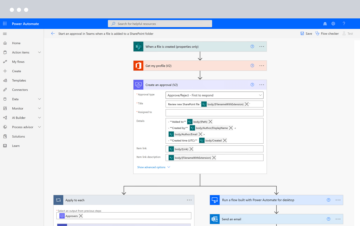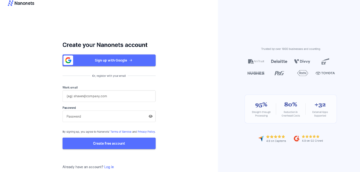
What is Sage100 ERP?
Sage 100 ERP (for enterprise resource planning) is a unified accounting system with modules for business process functionality throughout a company that combines into a single database. Sage 100 is used by companies of all sizes, although it targets companies with 10 to 199 employees.
The most recent Sage 100 software product is Sage 100cloud. Former branding for Sage 100 ERP includes MAS 90, MAS 200, Sage 100c, and Master Builder for Sage 100 Contractor.
Key features of Sage 100 ERP
The key features of Sage 100 ERP are:
- Financials
- Payroll and time tracking
- Distribution and manufacturing
- Insights and reporting
- Customization and integration
- Sales Order module
- Sage CRM and Sage Contact
Financials
The Sage 100 Financials accounting software consists of:
- General ledger module
- Accounts receivable
- Accounts payable
- Bank reconciliation
- Credit card processing
- E-invoicing
- Fixed assets and intelligence
- Purchase Order module
Although Sage 100 offers its own CRM for customer relationship management, you can choose to integrate Salesforce CRM with Sage 100 instead.
Sage 100 Financials functionality lets you detect and identify unrecorded transactions needing follow-up. The included Sage 100 accounts receivable and accounts payable processing provides basic functionality, including recording and manually paying invoices and producing aging reports.
Sage 100 Fixed Assets lets your business track assets like office equipment and computers, get book and tax depreciation calculations, and use Sage 100’s Microsoft Excel-like reporting interface.
With the Sage 100 Purchase Order module related to procurement, your business can track its purchases by line item, including item number, quantity, unit cost, and extended cost. You can also evaluate vendor performance with metrics including on-time delivery and vendor accuracy.
Payroll and time tracking
Payroll and time tracking features are processing payroll with payroll reports, tracking PTO (paid time off) and sick leave, and updating job cost labor with time tracking.
Distribution and manufacturing
Companies with warehousing and manufacturing operations need special features that Sage 100 provides via modules for inventory control and order fulfillment, production planning and scheduling, and Bills of Material for ordering parts and manufacturing.
Insights and reporting
Key Sage 100 business insights and reporting features include:
- Business Insights Explorer with a drill-down search feature
- A dashboard for metrics and results recaps, as either default or modifiable by user
- Crystal Reports for custom reports
- Sage Intelligence Reporting module
Customization and integration
Sage 100 lets you set up different back-office tasks with its customization and integration features.
The Sage 100 ERP customization and integration features include:
- Custom Office to change the Sage 100 screen appearance
- Microsoft® Office Link to automatically create custom documents, messages, and attachments
- Paperless Office to replace paper documents with digitization
- Visual Integrator to achieve seamless Sage 100 integration with other business applications
Which types of businesses use Sage 100?
Sage 100 is used by small and midsize companies in many industries, including IT services, software, healthcare, retail, accounting firms, manufacturing, and distribution businesses. Sage offers a different product, Sage 100 Contractor, for the construction industry, which has the highest customer count.
Benefits of Sage 100 ERP implementation for businesses
Sage 100 benefits businesses of all types through its extensive feature set. It provides needed tools to manufacturing and distribution companies with specialized modules and to construction companies that use the Sage 100 Contractor product. Sage 100 makes sales order fulfillment easy and integrates with shipping company software.
These users need features for inventory ordering using purchase orders and inventory control. Inventory management includes physical inventory counts, lot and serial number tracking, and item tracking by warehouse location. With Sage 100, users can choose standard costing, average costing, or another method that suits their business and industry.
For manufacturers, Sage 100 includes MRP (material requirements planning), which uses demand forecasts and hierarchical bills of material (with top-level and lower-level BOM sub-assembly product structure levels) to determine parts to order, pull parts from their warehouses, and manufacture finished goods. Manufacturers also use production master scheduling for standard products and work orders for the production process.
Construction companies and service companies can track project costing and perform project management tasks.
Sage 100 pricing
Sage 100 is an affordable ERP system with custom quotes for SaaS pricing in a choice of three different Sage 100cloud plans: Essentials, Advanced, and Complete. The total cost of Sage 100 ERP includes the SaaS plan level, modules, and add-ons you select to meet your business needs, as well as any implementation, training, and customization costs.
Sage sells Sage 100 through a VAR (value-added reseller) network that provides services in addition to the software.
How to implement Sage 100 for your business?
To implement Sage 100 for your business, request an implementation guide from your VAR or Sage 100 consultant. Plan the implementation steps and a timeline with milestones, teams, and budget. Analyze your business process workflows. Communicate the change to your entire workforce with high-level involvement from the CEO to get the needed buy-in and commitment throughout the organization.
Include add-on AP automation software in your software budget for integrated payables through Sage 100 integration. Accounts payable automation software begins with vendor invoice data capture through invoice processing and global payments. Your company can choose to add AP automation software either immediately upon Sage 100 ERP implementation or at any time after it starts using Sage 100.
AP automation software integration with Sage 100 ERP
Using AP automation is one of the best ERP integrations to achieve digital transformation. It significantly improves the efficiency of accounts payable processes. Your company achieves cost savings by changing from an inefficient manual data entry, paper system to a fully automated, digital invoice processing system. Integrated AP automation syncs data with your ERP system, including the general ledger, meaning you don’t need to manually add the same data to a second system.
AP automation software includes:
- supplier invoice data capture with OCR and artificial intelligence technologies
- error checking
- 3-way or 2-way matching to purchase orders and receiving records
- routing approvals with automated or custom rules
- making global electronic payments
- payment status communications
Nanonets Flow provides streamlined workflow automation and uses advanced OCR/AI for invoice data extraction from any format, including PDF for OCR scanning, and artificial intelligence/machine learning technologies for 95% straight-through digital supplier invoice processing.
Flow invoice processing includes error detection, 3-way matching or 2-way matching, automatic general ledger coding, and customized approvals routing. Nanonets
Conclusion
Sage 100 ERP, with its optional modules and add-ons, can serve the needs of businesses needing a lower-cost but comprehensive system to manage their operations in a unified way.
Your business needs Sage 100 integration with AP automation and other third-party add-on software to increase efficiency, functionality, and business spend visibility.
Flow by Nanonets is AP automation software that performs invoice data capture and invoice processing, including approvals and global electronic payments. Flow gives your business real-time control over its accounts payable spending. Get started with Flow by Nanonets.
- SEO Powered Content & PR Distribution. Get Amplified Today.
- PlatoData.Network Vertical Generative Ai. Empower Yourself. Access Here.
- PlatoAiStream. Web3 Intelligence. Knowledge Amplified. Access Here.
- PlatoESG. Carbon, CleanTech, Energy, Environment, Solar, Waste Management. Access Here.
- PlatoHealth. Biotech and Clinical Trials Intelligence. Access Here.
- Source: https://nanonets.com/blog/sage-100-erp/
- :has
- :is
- $UP
- 1
- 10
- 100
- 12
- 13
- 14
- 15%
- 16
- 17
- 19
- 2%
- 20
- 200
- 2024
- 21
- 24
- 4
- 5
- 7
- 8
- 9
- 90
- 95%
- a
- Accounting
- accounting software
- Accounts
- accounts payable
- accounts payable automation
- accuracy
- Achieve
- Achieves
- add
- Add-on
- addition
- advanced
- affordable
- After
- Aging
- All
- also
- Although
- an
- analyze
- and
- Another
- any
- ap automation
- approvals
- ARE
- artificial
- artificial intelligence
- AS
- Assets
- At
- Automated
- Automatic
- automatically
- Automation
- average
- basic
- begins
- benefits
- BEST
- Bills
- book
- branding
- budget
- builder
- business
- Business Process
- businesses
- but
- by
- calculations
- CAN
- capture
- card
- ceo
- change
- changing
- choice
- Choose
- combines
- commitment
- communicate
- Companies
- company
- complete
- comprehensive
- computers
- conclusion
- consists
- construction
- consultant
- contents
- Contractor
- control
- Cost
- cost savings
- Costs
- counts
- create
- CRM
- custom
- customer
- Customer Relationship
- customer relationship management
- customization
- customized
- dashboard
- data
- data entry
- Database
- Default
- delivery
- Demand
- depreciation
- detect
- Detection
- Determine
- different
- digital
- Digital Transformation
- distribution
- documents
- Dont
- easy
- efficiency
- either
- Electronic
- employees
- Enterprise
- Entire
- entry
- equipment
- ERP
- error
- essentials
- evaluate
- explorer
- extended
- extensive
- extraction
- Feature
- Features
- financials
- finished
- firms
- fixed
- flow
- For
- forecasts
- format
- Former
- from
- fulfillment
- fully
- functionality
- get
- gives
- Global
- Global Payments
- goods
- guide
- healthcare
- high-level
- highest
- HTML
- HTTPS
- identify
- immediately
- implement
- implementation
- improves
- in
- include
- included
- includes
- Including
- Increase
- industries
- industry
- inefficient
- insights
- instead
- integrate
- integrated
- Integrates
- integration
- Intelligence
- Interface
- into
- inventory
- Inventory Management
- invoice
- invoice processing
- invoices
- involvement
- IT
- ITS
- Job
- Key
- labor
- learning
- Leave
- Ledger
- Lets
- Level
- levels
- like
- Line
- LINK
- location
- Lot
- MAKES
- manage
- management
- manual
- manually
- Manufacturers
- manufacturing
- many
- MAS
- master
- matching
- material
- meaning
- Meet
- messages
- method
- Metrics
- Microsoft
- Milestones
- min
- module
- Modules
- most
- Need
- needed
- needing
- needs
- network
- None
- number
- OCR
- of
- off
- Offers
- Office
- ONE
- Operations
- or
- order
- ordering
- orders
- organization
- Other
- over
- own
- paid
- Paper
- parts
- paying
- payments
- Payroll
- perform
- performance
- performs
- physical
- plan
- planning
- plans
- plato
- Plato Data Intelligence
- PlatoData
- pricing
- process
- processes
- processing
- producing
- Product
- Production
- Products
- project
- project management
- provides
- purchase
- purchase order
- purchases
- quantity
- quotes
- real-time
- receivable
- receiving
- recent
- recording
- related
- relationship
- Relationship Management
- replace
- Reporting
- Reports
- request
- Requirements
- resource
- Results
- retail
- round
- routing
- SaaS
- sales
- salesforce
- same
- Savings
- scanning
- scheduling
- Screen
- seamless
- Search
- Second
- select
- Sells
- serial
- serve
- service
- Services
- set
- Shipping
- significantly
- single
- sizes
- small
- Software
- special
- specialized
- spend
- Spending
- standard
- started
- starts
- Status
- Steps
- streamlined
- structure
- suits
- supplier
- system
- targets
- tasks
- tax
- teams
- Technologies
- that
- The
- their
- third-party
- three
- Through
- throughout
- time
- timeline
- to
- tools
- top-level
- Total
- track
- Tracking
- Training
- Transactions
- Transformation
- types
- unified
- unit
- updating
- upon
- use
- used
- users
- uses
- using
- vendor
- via
- visibility
- Warehouse
- Warehousing
- Way..
- WELL
- which
- with
- Work
- workflows
- Workforce
- you
- Your
- zephyrnet











